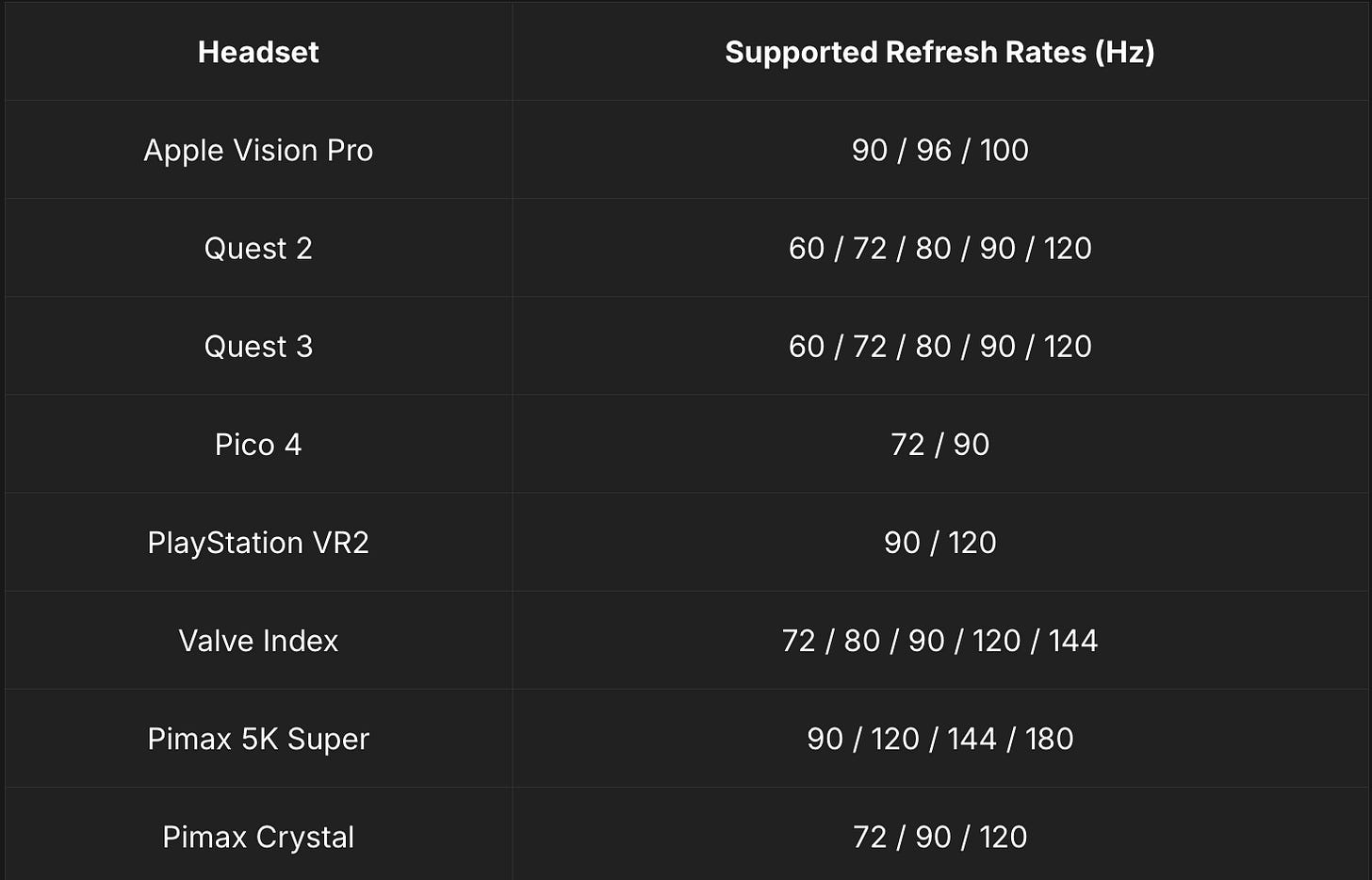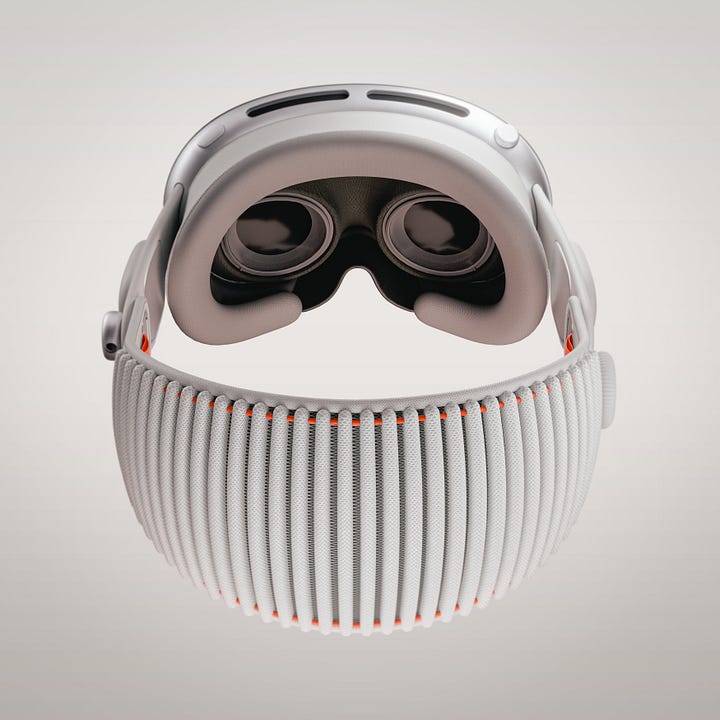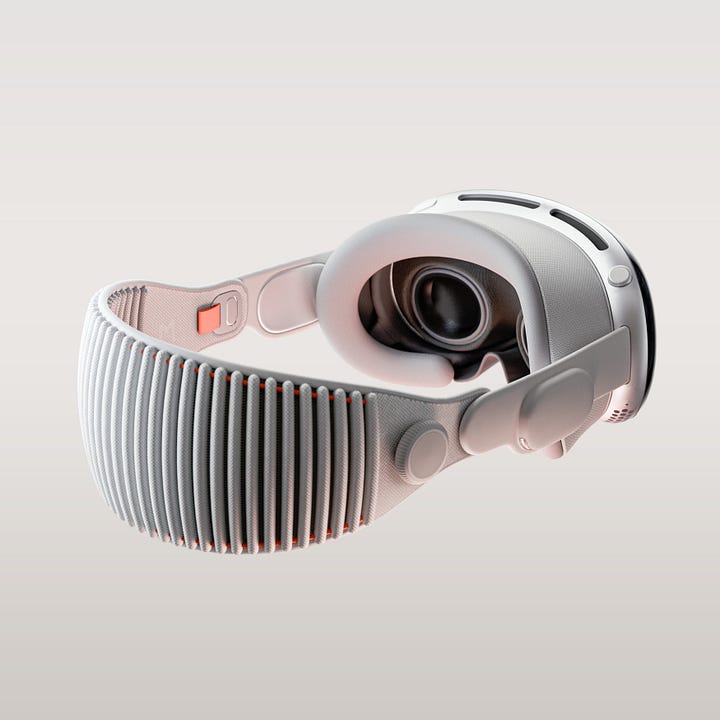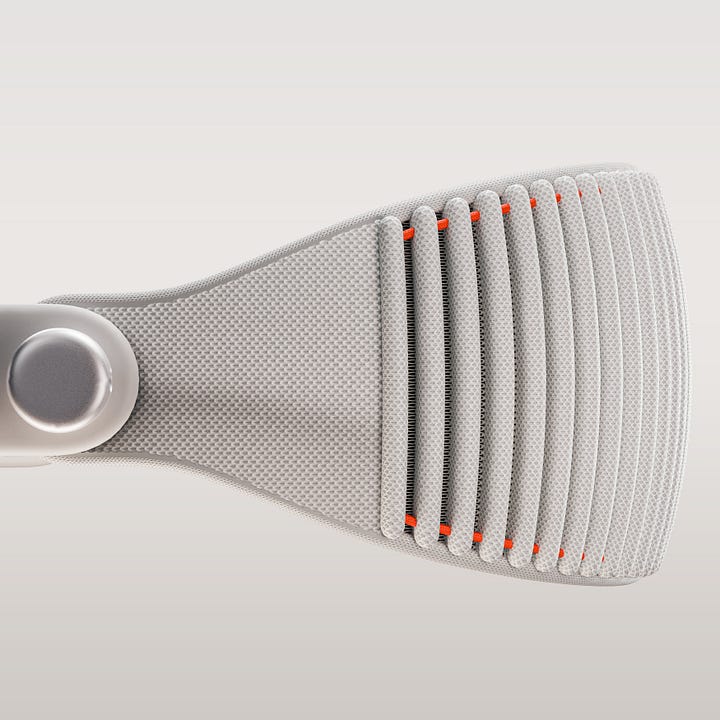Last Week in AVP #8: More Follow-ups On Review By Former Head of Oculus, NVIDIA Omniverse on Apple Vision Pro, New Accessibility Section in FAQ, and More!
Accessibility Section Added to FAQ
This week I’ve expanded the FAQ to include an accessibility section. I highly encourage you to check it out. Don’t let the name mislead you, I have found accessibility features tremendously useful for even day-to-day situations. For example, my favourite feature is being able to lock out hand input all together when I am eating dinner and watching TV/reading inside the apple vision pro.
Here are some topics covered:
I will be adding a new section to the FAQ every week. If there are topics you are interested feel free to leave a comment below.
Follow-up Commentaries
Following from last week’s commentaries, this week we take a deeper dive into a couple of topics in a popular review from Hugo Barra (former Head of Oculus at Meta).
Apple’s anti-VR stance
In his blog, he reviews the Apple Vision Pro by opening with this title in the software section:
The Vision Pro software story is a bold antithesis of VR — and the lack of exciting AR apps at launch paints the product into an empty corner
And he further comments:
The company has gone out of their way to actively ignore everything that VR has been known for over the last decade.
MY TAKE: Apple’s anti-VR stance is a risky move because it negates most of the traditional immersive content that has made the VR medium popular until now, and at least for now is painting Vision Pro into an empty corner.
Which I immediately felt a bit odd because I don’t think Apple is anti-VR. Yes Apple is very specific on terminology. Famously it has been critiqued for its strict appstore policies on usage of words such as AR, VR, MR, and XR:
• Spatial computing: Refer to your app as a spatial computing app. Don’t describe your app experience as augmented reality (AR), virtual reality (VR), extended reality (XR), or mixed reality (MR).
The reality is that these terms don’t mean much to the average user, and frankly don’t even have a consensus definition among industry experts. Instead, to avoid confusion Apple has opted for an umbrella term - Spatial Computing. But there is absolutely no evidence that Apple is anti-VR. Spatial Computing encompasses VR—it's just not exclusively focused on VR. Apple has much bigger ambitions here.
Apple designed VR experiences at the very core of visionOS from the very beginning, as part of a set of functionalities called Spaces.
Once an app takes over the Full Space, it is free to place content anywhere overriding other apps and windows.
And finally, an app can opt to deliver the experience in a number of different styles.
In fact, one of the front and centre app at launch - Disney+ has a VR mode built right into it. Which is no doubt done in deep collaboration with Apple.
Hugo accurately points out that AVP doesn't prioritize VR to the extent that Meta's devices do. However, to suggest that VR is marginalized within visionOS is not accurate.
A Deeper Look in Developer Interest
In another section, Hugo comments:
The fact that ARKit has been available for so many years on iPad and iPhone (despite its limited success) should have made it possible for Apple to easily round up developers into building a sufficient number of exciting and impressive AR titles for Vision Pro. Instead, we’re seeing an initial lack of developer excitement for the category that should have been the most defining and inspiring category on Vision Pro.
To further clarify, I think there are two points worth exploring here. (1) Is there a lack of developer interest as a whole and (2) Is there a lack of interest in developing AR apps?
To answer that, I did a bit of research and compared all the apps available on launch from all the previous new platforms launched by Apple
Platform - Apps available on launch day
iPhone - 500 (source)
iPad - 1000 (source)
Apple Watch - 3,500 (source)
Apple TV - ~500 (source)
Apple Vision Pro - 600 (source)
AVP appears to match the level of interest seen in Apple's previous platform launches, with only the Apple Watch standing out as an exception. And this certainly matches my experience being a developer in the Apple ecosystem myself.
However, is there a lack of interest in AR apps? Well this one is more complex. I think it's less about a lack of enthusiasm and more about the challenges with developing AR apps using just the simulator. Very little developers got access to the real hardware prior to launch and the simulator simply just does not allow the developer to layer their application on top of real life scenes.
My believe is that AR apps will come over time but given that a quality app will take anywhere between 6-12 months of development we might not be seeing them for at least a few more months. Suggesting a diminishing interest in AR development at this point seems premature.
Apple Vision Pro Around the Web
120fps is the "important threshold" to avoid VR sickness
It's important to note that this study was confined to one niche headset, so it's unknown whether its results generalize to other headsets.
Quest 3 and Quest 2 do support 120Hz refresh rate. But in standalone mode it's a developer-side option that very few use, because the requirement to render each frame in just 8 milliseconds severely limits graphical fidelity and simulation complexity on mobile chipsets.

Apple Releases visionOS 1.1.1 With Bug Fixes
This update provides important bug fixes and security updates and is recommended for all users.
For information on the security content of Apple software updates, please visit this website: https://support.apple.com/HT201222
Full feature travel video recorded in Spatial Video
Full video gated behind patreon.
NVIDIA Omniverse Expands Worlds Using Apple Vision Pro
NBA concept in Apple Vision Pro (source)
Kid tries on Apple Vision Pro (source)
Australia, China, and Japan added to list of countries to launch next (source)
Apple is looking to hire a so-called "Briefing Experience Specialist" in all three countries. This is a sales position that will involve demonstrating the Vision Pro's capabilities to business/enterprise customers, according to the job listing.
Playing virtual drum on AVP (source)
WebXR transient-pointer input support added to AVP
This week the company announced the latest version of VisionOS (1.1) includes a new input mode for Safari’s WebXR capabilities called ‘transient-pointer’. This new mode provides inputs from the headset in a standardized way which developers can use to understand what users are selecting inside of a WebXR session running on Vision Pro.
How to enable WebXR from Apple
Enabling WebXR support
Whether you have Apple Vision Pro or are using visionOS Simulator, you’ll want to turn on support for WebXR. From the Home View, go to Settings > Apps > Safari > Advanced > Feature Flags and enable WebXR Device API.
Shopping experience reimagined (source)
Scientists control a robot with their hands while wearing AVP (source)
Caviar's 18-Karat Gold Custom Apple Vision Pro (source)
Beautiful 3D render of AVP with lighting (source)




Cyberpunk 2077 in VR on Apple Vision Pro (source)
That’s all for now, feel free to leave me any feedback and discussions! 🙏
Until next week 👋













